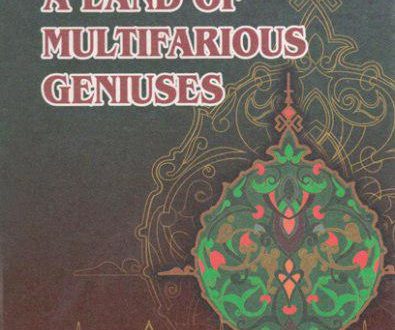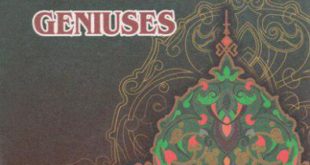In 1113-1114, on the way to pilgrimage to Hajj, Abu Hafs an-Nasafi visited Baghdad, attended the lessons of the local sheikhs and listened to their Hadiths. During his stay in this city, he copied a number of Hadiths from Abu-l-Qasim ibn Bayan in Amir Khumar-Tegin ibn Abdullah madrasah. An expert in the science of Hadiths Ibn an-Najjar of Baghdad mentioned that he had cited the Hadiths included into Abu Hafs an-Nasafi’s book “Tatvil al-asfor li-tahsil al-akhbar” (Long Visits in Search of Information). This book contains important information about the teachers and masters of the author. However, his visit to Baghdad, Mecca and Medina was very short, and he soon returned to his native city.
Among Abu Hafs an-Nasafi’s students and disciples, we can see mostly the scholars from Nasaf. Among them,we can mention the names of Abu Muhammad Abdullah ibn Ali an-Nasafi (the 12th century), Abu-l-Qasim Muhammad ibn Muhammad an-Nasafi (the 12th century) and Abu Bakr Muhammad ibn al-Hasan an-Nasafi (the 12th century). There were also some followers of Abu Hafs an-Nasafi from Samarkand and other regions of Maveraunnahr such as Abu Muhammad al-Hasan ibn Ahmad as-Samarqandi, Abu Nasr Ahmad ibn Abd-ar-Rahman ar-Righdamuni from Bukhara, Abu Abdullah Muhammad ibn Ibrahim an-Nurbashti, etc. An-Nurbashti used to attend “Khumar-Tegin’’ madrasah in Baghdad and listen to Hadiths delivered by Abu Hafs an-Nasafi.
Abu Hafs an-Nasafi’s son Abu-l-Lays Ahmad ibn Umar was one of his followers and students who continued his father’s attempts to spread the Islamic sciences in Maveraunnahr. He was also engaged in different branches of the Islamic sciences, especially in the science of Hadiths. A well-known scholar of his time Abu Sad as-Sam’ani mentions in his writings that he had good and fruitful conversations and debates with Abu-l-Lays and had a scientific collaboration with him.
In his book “Muntakhab mu’jam shuyukh as-Sam’ani (A selection of stories about the teachers of as-Sam’ani), Abu Sad Sam’ani writes the following lines about an-Nasafi’s potential in the science of Hadiths: “Abu Hafs Umar ibn Muhammad ibn Ahmad an-Nasafi as-Samarqandi al-Hafiz was a representative of Nasaf and he lived in Samarkand. He was an imam, lawyer and one of the experts who had good knowledge in the fields of mazhab and morality. He wrote books about law and Hadiths. He rewrote Muhammad ibn al-Hasan ash-Shaybani’s (died in 804-805) book “Al-Jamf as-saghir” (A small Collection of Works) in poetic verses. He was a leading specialist in collecting and classifying the scientific works in the fields of Islamic sciences. He was known to have listened Hadiths from the leading experts in Hadiths of his time such as Abu Muhammad Ismail ibn Muhammad an-Nuhi an-Nasafi, Abu-l-Yusr Muhammad ibn Muhammad ibn al-Husain al-Pazdavi, Abu Ali al-Hasan ibn Abd al-Malik an-Nasafi, etc. Though I could not manage to meet him in Samarkand when he was alive. I managed to have a written permission to own his collection of writings. Some people used to cite Hadiths from him to me”.
From the information provided by Abu Sad as-Sam’ani about Abu Hafs an-Nasafi, we may conclude that he was one of the estimated specialists in the field of Hadiths in Samarkand who had a number of teachers and used to comment their scientific works. He used to have his students write and copy the Hadiths mentioned by those scholars. In order to make these Hadiths for students clear and understandable, he used to comment them in detail and, if necessary, he explained their meaning in verses.
Alongside with an-Nasafi’s positive features, as-Sam’ani also i titicizes the works written by him. Such criticism is peculiar to her authors of Samarkand in the field of Hadiths because the scholars of the Hanafian order had their own views in the field of Hadiths. A representative of the Shafi’i-Ash’ari trend in religion Sa’d as-Sam’ani approaches to the works written by the Hana-li.m scholars from the point of view of Khorasan school of Hadiths. Avoiding the traditions formed in this city for a long period of time, •Sam’ani tries to estimate the reality with ideal criteria. Therefore, would be just to recognize the estimation given by as-Sam’ani to Abu Hafs an-Nasafi’s works not as a personal viewpoint but as a glance to reality in Samarkand environment from the point of view of Khorasan School.
 Imom Buxoriy xalqaro ilmiy-tadqiqot markazi bukhari.uz
Imom Buxoriy xalqaro ilmiy-tadqiqot markazi bukhari.uz











